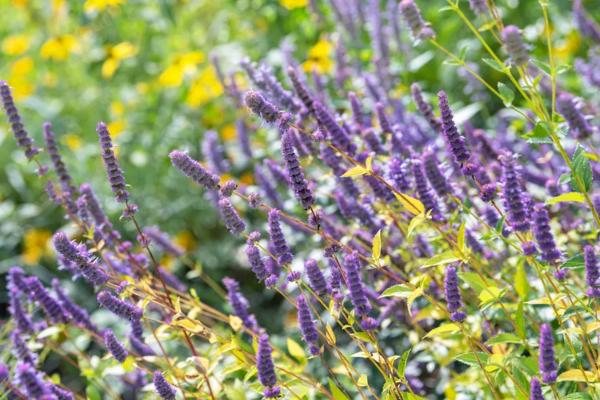Anise Hyssop is a part of the mint family. Contrary to its name, it is not anise or hyssop. Its leaves give a scent very similar to anise though some say that the smell resembles more like basil or French tarragon. If you’ve seen the plant, you might have noticed that its flower spikes are usually blue-lavender to purple, depending on the variety, on upright stems decorated with dull green leaves. Each leaf is four inches long with a toothed margin similar to the aesthetic of common mint.
The plant is native to different parts of the Midwest and the Great Plains (Wisconsin to Ontario, west to British Columbia, and south to Colorado). This clump-forming perennial grows in native prairies, dry upland forested areas, plains, and fields. It blooms in abundance from mid to late summer through early fall and attracts pollinators like butterflies, and bees. Also, their extended bloom period makes them good for cutting flowers and mass plantings.
- Common Name: Anise Hyssop, Agastache, Licorice Mint, Hummingbird Mint, blue giant hyssop, fragrant giant hyssop, licorice plant, lavender giant hyssop
- Botanical Name: Agastache foeniculum
- Plant Type: Native herbaceous perennial
- Mature Size: 2 – 4 ft. tall, 1 – 3 ft. wide
- Sun Exposure: Full sun
- Soil Type: Fertile Chalk, Loam, Sand (not heavy clay, which doesn’t drain well and causes winter problems)
- Soil pH: Neutral
- Bloom Time: Mid-summer to fall
- Flower Color: Pink to creamy white, powder blue to red-violet (most commonly blue to lavender purple)
- Hardiness Zone: 3-8, USDA
- Native Area: North America
Also, Read Plant and Grow Joe Pye Weed Like A Pro
Anise Hyssop Care
It is best to plant Anise Hyssop in spring after the last frost. It would help if you established seedlings any time until early summer. There must be a space of at least 18 to 24 inches in borders, wildflower gardens, and herb or butterfly gardens. These serve perfectly well in the middle of the back of perennial borders as they can reach 2 to 5 feet tall and 1 to 3 feet wide.
You can pair Anise Hyssop with other friendly plants like Japanese anemones, other natives such as biennial brown-eyed Susan, and goldenrods such as Fireworks. They also go well with fellow herbs like garlic, chives, oregano, and thyme.
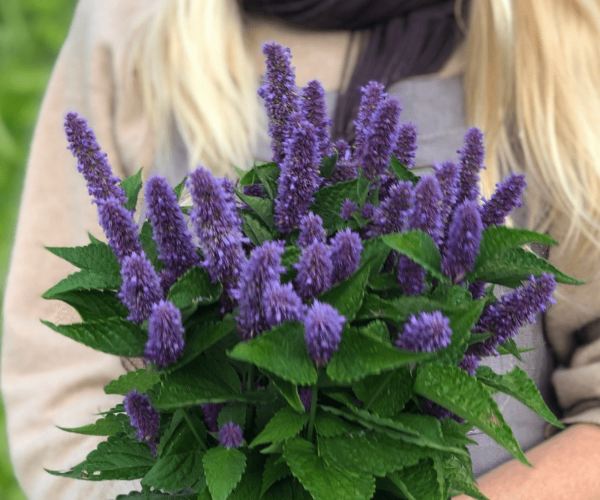
Light
This plant prefers full, bright sun. Though it can grow in partial shade, it will not thrive without proper sunlight.
Soil
Anise Hyssop will thrive when planted in fertile and well-drained soil, some combination of sand, loam, chalk, or clay. Try your best to avoid soil that gets too heavy or which makes it difficult for the roots to get established which might lead to root rot. Also, your soil needs to have a pH that is as neutral as possible. You can help it with lime if it’s too acidic.
Water
If you’ve recently planted Anise Hyssop, water it weekly if there is no rainfall for the first four weeks. Water slowly and deeply and once the roots are established, cease watering. Since they are drought tolerant, they are very easy to grow and care for.
Fertilizer
Anise Hyssop needs fertilizing in early spring every other year with almost a bucket of compost, sprinkled around its base. You need to ensure that they target the roots and leave a few inches of soil between the compost and the plant’s basic stem.
Anise Hyssop uses
Anise Hyssop has a long history of medicinal history use by Native Americans. It is a versatile, aromatic, culinary, and healing herb. It is useful in the kitchen and the garden. It is a great pollinator and attracts bees, butterflies, and hummingbirds.
Also, many birds eat any seeds left on the stalks toward the fall’s end. The flowers and the leaves of this plant offer a deep licorice smell and taste.
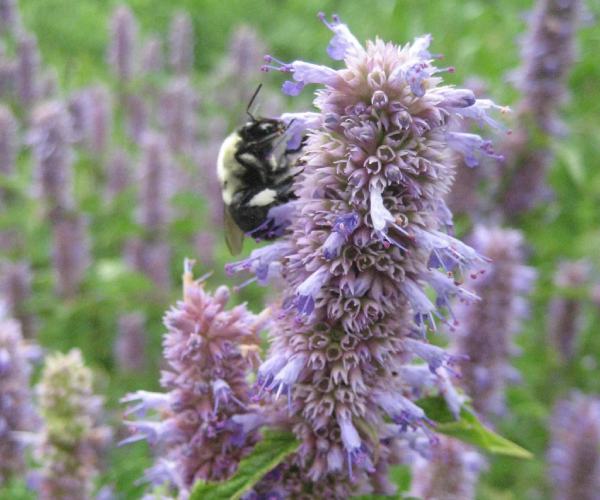
You can crumble its aromatic leaves in salads use them to make jellies, and steep them in herbal tea which also helps relieve depression. Its seeds can be sprinkled in cookie, muffin, or biscotti mix and you can use its dried flowers as a seed substitute for the same licorice flavor.
Anise Hyssop’s beautiful fresh flowers will look great in a bouquet. You can hang these spikes upside down or let them dry naturally to add to dried floral arrangements.
Anise Hyssop varieties
Here are some of the most popular varieties of this perennial:
Alabaster: It is a hybrid that blooms creamy-white flowers. This variety is lighter green than most other hybrids. It grows up to 3 feet tall and does not get bushy as other kinds of anise hyssop.
Black Adder: It consists of dark buds and red-violet flowers. Compared to other species, it grows less quickly and robustly.
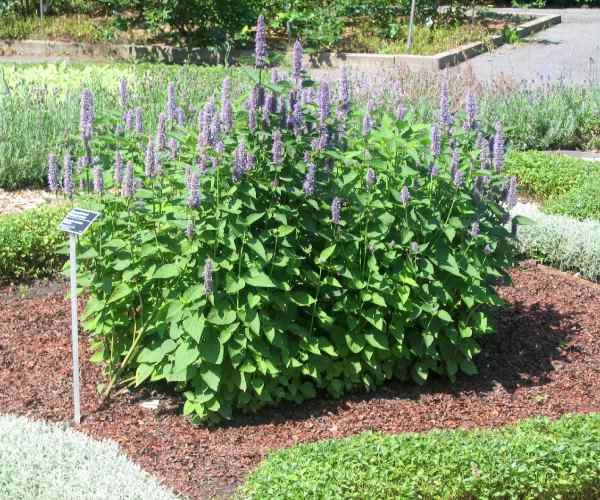
Blue Blazes: This species is a tall hybrid of A. foeniculum and Agastache ‘Desert Sunrise.’ It has pinkish calyxes and lavender-purple blooms that seem to glow in the sunlight.
Blue Fortune: This is a sterile hybrid of hybrid of A. foeniculum and A. rugosa. The flower spikes are basically thick and powdery blue. The leaves of these plants are large and dark green. It starts blooming in midsummer and the flowers last long because they bear no seeds. Plants grow 3 feet tall.
Blue Fountain/ Blue Spike: It is another popular variety of Anise Hyssop. It bears clear blue flowers.
Golden Jubilee: This has lasting, powdery-blue flowers, a striking contrast to its chartreuse foliage. This variety is tough and even thrives in high heat and humidity.
Liquorice Blue: This one has violet-blue flowers with reddish-purple calyxes.
Purple Haze: Unlike many other varieties of Anise Hyssop, they produce narrower flower spikes. Because of their narrowness, they do not attract as many large bees, but smaller pollinators can fit inside.
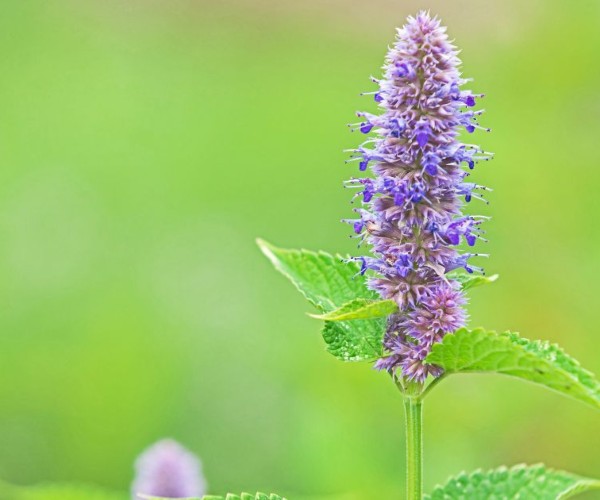
Red Fortune: This one has pink flowers. However, this hybrid doesn’t attract as many pollinators.
Snow Spike: This plant bears white flowers and grows up to 3 feet tall. It is also known as Album.
How to prune Anise Hyssop?
This is an independent plant that doesn’t need that much attention once it has established itself in your landscape. However, occasional pruning will encourage its bloom and keep the plant in its best form.
The best time to prune your Anise Hyssop is in early spring, using a pair of clean pruning shears. Remove any dead foliage just above a budding node.
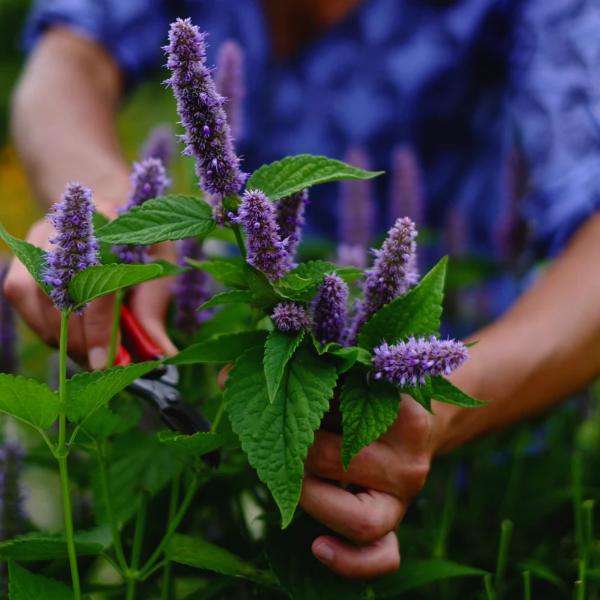
Division of Anise Hyssop
You can dig up and divide Anise Hyssop every 3 to 5 years. This will help your plant rejuvenate and prevent it from dying out. In spring, divide the plant by digging up the clump and dividing it in half.
After doing so, replant the division at the same depth as the original planting. Its distance should be at least 2 feet away from the original planting. You have to re-water both the divisions well until they re-establish in your landscape.
Propagating Anise Hyssop
This plant will spread by rhizomes and will simply self-seed if given ideal conditions and proper care. The seeds need light to germinate, so press seeds into the seed starting mix but do not cover them with soil.
Cold, moist stratification helps in improving germination. Seeds should germinate in 1-4 weeks. It is also easy to save seeds from the plant. Let the flowers get dry on the plant and then take the flower spikes to collect the dried seeds.
Common Pests and Diseases
One thing to focus on is the root which may rot in poorly drained soils. Check an eye out for rust, powdery mildew, and leaf spots. Otherwise, Anise Hyssop is hardy and a vigorous perennial.
FAQs
Q: Is Anise Hyssop safe to eat?
A: It is an edible flower and they have a sweet licorice-like flavor that you can use in baked stuff like cookies and also salads. It is also used to make delicious tea which is great for digestion.
Q: Is Anise Hyssop plant invasive?
A: This plant is a self-seeding plant and spreads through the year. But, it doesn’t have the potential to be invasive. Despite being perennial, it lives short and parent plants for only 2-3 years. As it drops seeds, new plants will take the old one’s place.
Q: Is Anise Hyssop the same as lavender?
A: No, Anise Hyssop and lavender are two separate plants with different properties.
Also, Read How to Grow and Care for Goldfish Plant! Know Its Types, Propagation Tips, and Diseases!
